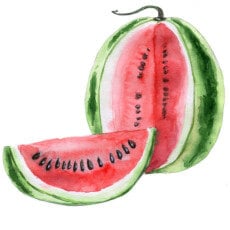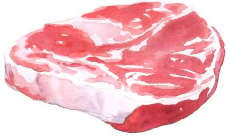Not happy with your purchase?
Simply let us know, and you'll get a full refund, no questions asked. And you don't even need to return anything.
So that means you can say "yes" now and decide later.
Legion Stim-Free Pulse Ingredients (14.4 grams per serving)
Citrulline Malate (8 grams per serving)
Citrulline malate is the amino acid L-citrulline bound with malic acid, a substance found in many fruits that is involved in the creation of cellular energy.
L-citrulline turns into another amino acid in the body known as L-arginine, which increases the production of a gas known as nitric oxide that widens blood vessels and improves blood flow.[9][10]
This is why research shows that supplementation with citrulline malate . . .
- Improves muscle endurance[11][12][13]
- Relieves muscle soreness[14]
- Improves aerobic performance[15][16]
The clinically effective dose of citrulline malate is between 4 and 10 grams.

Beta-Alanine (3.6 grams per serving)
Beta-alanine is a naturally occurring amino acid that regulates the amount of the molecule carnosine that can be stored in the muscles.[17]
Carnosine reduces muscle acidity, which increases the amount of work that muscles can do before they become fatigued.[18]
This is why research shows that supplementation with beta-alanine . . .
- Reduces exercise-induced fatigue[19][20][21][22]
- Improves anaerobic exercise capacity[23][24][25][26][27]
- Increases potential workload, which can lead to an increase in lean mass[28][29]
- Reduces feelings of fatigue during exercise[30][31][32]
The clinically effective dose of beta-alanine is between 2.6 and 6.4 grams.
We chose to include 3.6 grams of beta-alanine per serving because it provides significant performance benefits while also minimizing the common and harmless side effect of a mild prickling, itching, or tingling of the skin.[33]

Alpha-GPC (300 milligrams per serving)
Alpha-glycerophosphocholine (also known as alpha-GPC and glycerophosphocholine) is a compound that contains two molecules known as choline and glycerophosphate.
Choline is a nutrient that’s vital for brain health and function, and glycerophosphate is a substance that helps transport choline to the brain.
When ingested, alpha-GPC increases the activity of a chemical in the brain known as acetylcholine, which is used by nerves to communicate with each other, and provides the brain with glycerophosphate, which can improve its health and function.
This is why research shows that supplementation with alpha-GPC . . .
- Increases power output[34]
- Mitigates cognitive decline as we age[35]
- Increases growth hormone levels[36]
The clinically effective dose of alpha-GPC is between 150 and 1,200 milligrams, with 250 to 500 milligrams sufficient for cognitive benefits.[37]
We chose to include 300 milligrams of alpha-GPC (50%) per serving because it’s enough to provide some benefit without eating up too much budget that we’d rather spend on other ingredients.
Furthermore, this dose reduces the likelihood of headaches in people who are using stim-free Pulse and Forge together, and especially in people who are using stim-free Pulse, Forge, and Ascend together.

Betaine (2.5 grams per serving)
Betaine (also known as trimethylglycine) is an amino acid found in various foods like beets (hence the name), spinach, and quinoa.
Betaine’s rich in a special molecule known as a methyl group, which is a vital component of many physiological functions, including DNA production, fat metabolism, cellular energy production, and more.
Betaine’s also an osmolyte, which is a substance that helps balance fluid levels inside and outside cells.
These two properties are beneficial during times of physical stress, and this is why studies show that betaine boosts muscle endurance and increases strength.[38][39]
The clinically effective dose of betaine is between 1.25 and 2.5 grams.

Naturally Sweetened and Flavored
While artificial sweeteners may not be as dangerous as some people claim, studies suggest that regular consumption of these chemicals may indeed be harmful to our health.[40][41][42][43][44][45]
That’s why we use natural sweeteners like stevia, erythritol, and monk fruit instead. Research shows that these ingredients are not only safe but can also confer several health benefits, including better nutrient absorption, healthy cholesterol and inflammation levels, and more.[46][47][48][49]

No Artificial Food Dyes, Fillers, or Other Unnecessary Junk
As with artificial sweeteners, studies show that artificial food dyes and fillers can cause negative effects in some people, including gastrointestinal toxicity and behavioral disorders.[50][51][52][53][54]
That’s why we use natural coloring and flavoring derived from fruits and other foods as well as naturally derived ingredients for improving texture, enhancing shelf life, and facilitating the manufacturing process.

Lab-Tested for Purity and Accuracy
Pulse is lab-tested for purity and accuracy and certified to meet or exceed FDA safety guidelines.[55]

Made in the USA with Globally Sourced Ingredients
If you want to ensure the supplements you’re swallowing every day are safe and effective, you want to buy from a company that:
- Sources ingredients from premium suppliers around the world (great supplements require great raw materials)
- Tests all products for purity and accuracy in accredited laboratories (to conclusively verify safety and efficacy)
- Manufactures in America, which has some of the strictest regulations in the world
And that’s exactly what we do here at Legion.

See how Legion stim-free Pulse compares to the rest.
- Active Ingredients
- Clinically Effective Ingredients and Doses
- Citrulline Malate
- Beta-Alanine
- Betaine
- Alpha-GPC
- Naturally Sweetened
& Flavored - Lab-Tested for Purity and Accuracy
- Labdoor Ranking
- Price Per Serving
-
Legion Stim-Free
Pulse Pre-Workout
- 14,400 mg
per serving - 8,000 mg
per serving - 3,600 mg
per serving - 2,500 mg
per serving - 300 mg
per serving - A-
-
Pre-Kaged
Stimulant Free
- 23,050 mg
per serving - 6,500 mg
per serving - 1,600 mg
per serving - 2,500 mg
per serving - $1.99
-
PEScience
High Volume
- 10,750 mg
per serving - 4,000 mg
per serving - $1.94
-
C4
NO3 Ultimate
- 7,180 mg
per serving - 4,000 mg
per serving - $1.99
The #1 brand of naturally sweetened and flavored sports supplements.
We’ve sold over 5 million bags and bottles to over 1 million customers in 169 countries who have left us over 55,000 5-star reviews.
Clinically Effective Ingredients and Doses
Every active ingredient, form, and dose in Pulse is backed by peer-reviewed scientific research demonstrating clear benefits in healthy humans.
Naturally Sweetened and Flavored
Pulse is naturally sweetened with stevia and erythritol and naturally flavored with extracts from fruit, vegetables, plants and other foods.
Total Label Transparency
We clearly list the dose of each ingredient in Pulse on the label—no proprietary blends or hidden ingredients—so you can verify our formulation’s validity and effectiveness.
Lab-Tested for Purity and Accuracy
Pulse is lab-tested for purity and accuracy and certified to meet or exceed FDA safety guidelines.
Made in the USA
Pulse is made in America with globally sourced ingredients in NSF-certified, FDA-inspected facilities that adhere to Current Good Manufacturing Practice (cGMP) standards.
100% Money-Back Guarantee
If you don't absolutely love Pulse, you get a prompt and courteous refund. No forms or returns necessary.
Trusted by scientists, doctors, and everyday fitness folk alike.
Frequently Asked Questions
+References
Some popular stim-free pre-workouts are naturally sweetened and flavored. Some contain the right mix of high-quality ingredients. Some provide clinically effective doses. But only Pulse checks each of these boxes. ↑
While artificial sweeteners may not be as dangerous as some people claim, studies suggest that regular consumption of them may indeed be harmful to our health. That’s why we use the natural sweeteners stevia and erythritol instead.↑
Every serving of Pulse contains 14.4 grams of active ingredients that have been shown to be safe and effective in peer-reviewed scientific research.↑
Every active ingredient in Pulse is backed by published scientific studies that show benefits in healthy humans.↑
Stim-free Pulse contains no stimulants of any kind, so it won't wind you up and burn you out.↑
That's 792 pages of scientific research that shows Pulse works the way we say it does.↑
While artificial sweeteners may not be as dangerous as some people claim, studies suggest that regular consumption of them may indeed be harmful to our health. That’s why we use the natural sweeteners stevia and erythritol instead.↑
Did you know that some supplements contain dangerously high levels of toxins like lead, arsenic, and cadmium?
That’s why we rigorously test every ingredient in a third-party lab for heavy metals, microbes, allergens, and other contaminants, ensuring they meet the strict purity standards set by the U.S. Food and Drug Administration (FDA).↑
Förstermann U, Sessa WC. Eur Heart J. 2012;33(7):829-837, 837a-837d. doi:10.1093/eurheartj/ehr304.↑
Zhao Y, Vanhoutte PM, Leung SWS. J Pharmacol Sci. 2015;129(2):83-94. doi:10.1016/j.jphs.2015.09.002.↑
Pérez-Guisado J, Jakeman PM. Department of Medicine, University of Córdoba, Córdoba, Spain. J Strength Cond Res. 2010 May;24(5):1215-22. ↑
Glenn JM, Gray M, Wethington LN, Stone MS, Stewart RW, Moyen NE. Eur J Nutr. 2017;56(2):775-784. doi:10.1007/s00394-015-1124-6.↑
Glenn JM, Gray M, Jensen A, Stone MS, Vincenzo JL. Eur J Sport Sci. 2016;16(8):1095-1103. doi:10.1080/17461391.2016.1158321.↑
Pérez-Guisado J, Jakeman PM. Department of Medicine, University of Córdoba, Córdoba, Spain. J Strength Cond Res. 2010 May;24(5):1215-22. ↑
Bendahan D, Mattei JP, Ghattas B, Confort-Gouny S, Le Guern ME, Cozzone PJ. Centre de Résonance Magnétique Biologique et Médicale, Faculté de Médecine de la Timone, France. Br J Sports Med. 2002 Aug;36(4):282-9. ↑
Suzuki T, Morita M, Kobayashi Y, Kamimura A. J Int Soc Sports Nutr. 2016;13:6. doi:10.1186/s12970-016-0117-z.↑
Dunnett M, Harris RC. Department of Veterinary Basic Sciences, Royal Veterinary College, Hatfield, Hertfordshire, UK. Equine Vet J Suppl. 1999 Jul;(30):499-504. ↑
Budzeń S, Rymaszewska J. Adv Clin Exp Med. 22(5):739-744.↑
Derave W, Ozdemir MS, Harris RC, Pottier A, Reyngoudt H, Koppo K, Wise JA, Achten E. Dept. of Movement and Sport Sciences, Ghent Univ, Belgium. J Appl Physiol. 2007 Nov;103(5):1736-43. ↑
Stout JR, Cramer JT, Zoeller RF, Torok D, Costa P, Hoffman JR, Harris RC, O'Kroy J. Department of Health and Exercise Science, University of Oklahoma, Norman, OK, USA. Amino Acids. 2007;32(3):381-6. ↑
Stout JR, Graves BS, Smith AE, Hartman MJ, Cramer JT, Beck TW, Harris RC. Department of Health and Exercise Science, University of Oklahoma, Norman, OK, USA. J Int Soc Sports Nutr. 2008 Nov 7;5:21. ↑
Hoffman JR, Ratamess NA, Faigenbaum AD, Ross R, Kang J, Stout JR, Wise JA. Department of Health and Exercise Science, The College of New Jersey, Ewing, NJ, USA. Nutr Res. 2008 Jan;28(1):31-5. ↑
Hill CA, Harris RC, Kim HJ, Harris BD, Sale C, Boobis LH, Kim CK, Wise JA. School of Sports, Exercise & Health Sciences, University of Chichester, Chichester, UK. Amino Acids. 2007 Feb;32(2):225-33. ↑
Sale C, Saunders B, Hudson S, Wise JA, Harris RC, Sunderland CD. Biomedical, Life and Health Sciences Research Centre, School of Science and Technology, Nottingham Trent University, Nottingham, UK. Med Sci Sports Exerc. 2011 Oct;43(10):1972-8. ↑
Walter AA, Smith AE, Kendall KL, Stout JR, Cramer JT. Biophysics Laboratory, Department of Health and Exercise Science, University of Oklahoma, Norman, Oklahoma, USA. J Strength Cond Res. 2010 May;24(5):1199-207. ↑
Smith AE, Walter AA, Graef JL, Kendall KL, Moon JR, Lockwood CM, Fukuda DH, Beck TW, Cramer JT, Stout JR. Metabolic and Body Composition Laboratory, Department of Health and Exercise Science, University of Oklahoma, Norman, OK, USA. J Int Soc Sports Nutr. 2009 Feb 11;6:5. ↑
Hobson RM, Saunders B, Ball G, Harris RC, Sale C. Biomedical, Life and Health Sciences Research Centre, School of Science and Technology, Nottingham Trent University, Clifton Lane, Nottingham, UK. Amino Acids. 2012 Jul;43(1):25-37. ↑
Kern BD, Robinson TL. Human Performance and Physical Education Department, Adams State College, Alamosa, Colorado, USA. J Strength Cond Res. 2011 Jul;25(7):1804-15. ↑
Smith AE, Walter AA, Graef JL, Kendall KL, Moon JR, Lockwood CM, Fukuda DH, Beck TW, Cramer JT, Stout JR. Metabolic and Body Composition Laboratory, Department of Health and Exercise Science, University of Oklahoma, Norman, OK, USA. J Int Soc Sports Nutr. 2009 Feb 11;6:5. ↑
Stout JR, Cramer JT, Zoeller RF, Torok D, Costa P, Hoffman JR, Harris RC, O'Kroy J. Department of Health and Exercise Science, University of Oklahoma, Norman, OK, USA. Amino Acids. 2007;32(3):381-6. ↑
Stout JR, Graves BS, Smith AE, Hartman MJ, Cramer JT, Beck TW, Harris RC. Department of Health and Exercise Science, University of Oklahoma, Norman, OK, USA. J Int Soc Sports Nutr. 2008 Nov 7;5:21. ↑
Hoffman JR, Ratamess NA, Faigenbaum AD, Ross R, Kang J, Stout JR, Wise JA. Department of Health and Exercise Science, The College of New Jersey, Ewing, NJ, USA. Nutr Res. 2008 Jan;28(1):31-5. ↑
Beasley L, Smith L, Antonio J, Gordon D, Johnstone J, Roberts J. J Int Soc Sports Nutr. 2018 Dec 18;15(1):59. doi: 10.1186/s12970-018-0266-3. ↑
Ziegenfuss T, Landis J, Hofheins J. J Int Soc Sports Nutr. 2008;5(Suppl 1):P15. doi:10.1186/1550-2783-5-S1-P15. ↑
De Jesus Moreno Moreno M. Clin Ther. 2003;25(1):178-193. ↑
Kawamura T, Okubo T, Sato K, et al. Nutrition. 2012;28(11-12):1122-1126. doi:10.1016/j.nut.2012.02.011 ↑
Marcus L, Soileau J, Judge LW, Bellar D. Journal of the International Society of Sports Nutrition. 2017;14:39. doi:10.1186/s12970-017-0196-5. ↑
Trepanowski JF, Farney TM, McCarthy CG, Schilling BK, Craig SA, Bloomer RJ. Cardiorespiratory/Metabolic Laboratory, The University of Memphis, Memphis, Tennessee, USA. J Strength Cond Res. 2011 Dec;25(12):3461-71. ↑
Lee EC, Maresh CM, Kraemer WJ, Yamamoto LM, Hatfield DL, Bailey BL, Armstrong LE, Volek JS, McDermott BP, Craig SA. Department of Kinesiology, University of Connecticut, Storrs, CT, USA. J Int Soc Sports Nutr. 2010 Jul 19;7:27. ↑
Basson AR, Rodriguez-Palacios A, Cominelli F. Front Nutr. 2021;8:746247. Published 2021 Sep 24. doi:10.3389/fnut.2021.746247.↑
Suez J, Korem T, Zilberman-Schapira G, Segal E, Elinav E. Gut Microbes. 2015;6(2):149-155. doi:10.1080/19490976.2015.1017700.↑
Qin X. Department of Surgery, University of Medicine and Dentistry of New Jersey, New Jersey Medical School, Newark, New Jersey, USA. Can J Gastroenterol. 2011 Sep;25(9):511. ↑
Shil A, Chichger H. Int J Mol Sci. 2021;22(10):5228. Published 2021 May 15. doi:10.3390/ijms22105228.↑
Suez J, Korem T, Zeevi D, et al. Nature. 2014;514(7521):181-186. doi:10.1038/nature13793.↑
Frankenfeld CL, Sikaroodi M, Lamb E, Shoemaker S, Gillevet PM. Ann Epidemiol. 2015;25(10):736-42.e4. doi:10.1016/j.annepidem.2015.06.083.↑
Yadav SK, Guleria P. CSIR-Institute of Himalayan Bioresource Technology, Palampur, 176061, HP, India. Crit Rev Food Sci Nutr. 2012;52(11):988-98. ↑
Shivanna N, Naika M, Khanum F, Kaul VK. Department of Applied Nutrition, Defence Food Research Laboratory, Mysore, India. J Diabetes Complications. 2013 Mar-Apr;27(2):103-13. ↑
World Health Organization. WHO Press; 2006. Available at: http://whqlibdoc.who.int/publications/2006/9241660546_eng.pdf. Accessed January 24, 2019. ↑
Ozbayer C, Kurt H, Kalender S, Ozden H, Gunes HV, Basaran A, Cakmak EA, Civi K, Kalender Y, Degirmenci I. Department of Medical Biology, Faculty of Medicine, Eskisehir Osmangazi University, Eskisehir, Turkey. J Med Food. 2011 Oct;14(10):1215-22. ↑
Feng J, Cerniglia CE, Chen H. Division of Microbiology, National Center for Toxicological Research, US Food and Drug Administration, AR , USA. Front Biosci (Elite Ed). 2012 Jan 1;4:568-86. ↑
Kanarek RB. Department of Psychology, Tufts University, Medford, Massachusetts, USA. Nutr Rev. 2011 Jul;69(7):385-91. ↑
Nigg JT, Lewis K, Edinger T, Falk M. Oregon Health and Science University, Portland, OR, USA. J Am Acad Child Adolesc Psychiatry. 2012 Jan;51(1):86-97.e8. ↑
McCann D, Barrett A, Cooper A, Crumpler D, Dalen L, Grimshaw K, Kitchin E, Lok K, Porteous L, Prince E, Sonuga-Barke E, Warner JO, Stevenson J. School of Psychology, Department of Child Health, University of Southampton, Southampton, UK. Lancet. 2007 Nov 3;370(9598):1560-7. ↑
Gao Y, Li C, Shen J, Yin H, An X, Jin H. Scientific and Technological College of Chemistry and Biology, Yantai Univ., Yantai, PR China. J Food Sci. 2011 Aug;76(6):T125-9. ↑
Did you know that some supplements contain dangerously high levels of toxins like lead, arsenic, and cadmium?
That’s why we rigorously test every ingredient in a third-party lab for heavy metals, microbes, allergens, and other contaminants, ensuring they meet the strict purity standards set by the U.S. Food and Drug Administration (FDA).↑


























